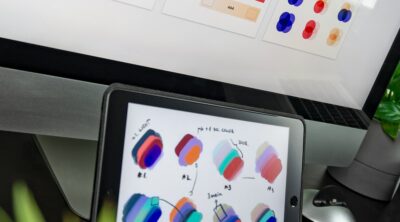< Back to all posts
Cinematic Techniques to Improve Your Videos
Have you ever watched a film, TV show, or even a commercial and found yourself extremely creatively inspired? You come up with a plan for your own video and have a grand vision in your mind for the end result. Yet when you find yourself checking out the playback, what you have onscreen doesn’t quite match up to your imagination. It can be frustrating, but there are plenty of cinematic techniques that you can use to help greatly improve the quality of your videos.
But what exactly does “looking cinematic” mean? Is it simply professional-grade? Or the presence of a narrative? Maybe it’s that certain “feel” that films tend to have. For the purposes of delving into some specific techniques and ideas, we’ll define cinematic as a style typically seen in movies. But it’s important to note today, these approaches also bleed over to other mediums. And can be applicable to improve any video project, from your business’s next great campaign to your weekend passion project.
Before You Shoot
What’s the content? Improvisation is great for creative spark, but you should have a general idea of how your project will flow. Even the shortest video ad spots are produced with pretty tight scripts to follow. Shooting a documentary or natural scene without any actors or lines? You’ll still need to think about and plan your shots.
To make your videos look more cinematic, you need to think about how the film styles you’re trying to emulate approach the craft. Whether you want to recreate your own version of “The Office” (British or American), emulate those gorgeous rack-focuses in HBO Documentaries or just “make it pretty” start with some inspiration.

One of the best ways to make your videos more cinematic is to emulate the styles of others. So much of filmmaking is paying homage to great works, while finding new voice and direction. Let’s look at some ways to have creativity just within the camera frame.
Camera shots:
-Dutch Angle
-Over-the-shoulder
-Extreme close-up
-Long shot
-Dirty the frame
Camera movement:
-Panning
-Tracking
-Zoom
-Tilt
-Crane/Jib
Camera angles:
-Bird’s eye angle
-Low angle
-High angle
-Point of view
Will you need a dolly or tripod? Handheld stabilizers are great, affordable, modern tools to utilize if you plan to shoot on the run. Maybe you’ll take a more modern approach with drones or 360 degree video. Additionally, consider your audio. Nothing takes away from a cinematic experience more than poor audio quality. Consider investing in the right microphones to up your production value. It’s better to be over prepared pre-shoot rather than realizing you’re missing equipment three days in!
During the Shoot
Proper planning beforehand is extremely important to the success of any shoot, especially when gearing towards a more cinematic approach. However the most important, technical aspects to consider will occur mostly during the actual shoot itself. And if done correctly, will help make your post production process a lot more smooth.
That starts with the right equipment. Now it’s easy to think that throwing money at an expensive camera should do the trick, but there’s a little more to it than that. Fortunately now, great cameras are accessible to pretty much anyone. iPhone’s are great in a pinch, but for a cinematic effect choose, a camera with a 3-quarter of an inch chip or higher. Sony, Canon and other camera manufacturers have a great line of DSLRs that work well in the hands of a professional or your own!
No matter what camera you decide to use, there are a few settings to consider. Shoot everything at 24 frames per second to achieve a more cinematic look, as most movies do.
The reason is that 24fps is very close to how we perceive things in real life. Additionally, since a vast majority of “real” movies are shot at 24fps, our eyes are trained to recognize that frame rate as cinematic. Now if you decide to add a slo-mo shot (which definitely falls under cinematic), be sure to double your shutter speed to create a fluid shot.
Lighting and Color
Having a basic understanding of how lighting affects your image can make all the difference. Shooting outdoors or inside using natural lighting offers a much different vibe than artificial lighting you would find on a set or studio. Natural light is a great way to capture a real, cinematic feel if you allow the light to “paint” the inside of the frame. But it can have the opposite affect if you’re not careful.
Shooting indoors offers less restrictions. You have the option to use more professional, controlled lighting and reflecting techniques to diffuse and soften light exactly to your liking. And it doesn’t have to be expensive – solid white cloth make for great DIY reflectors in a pinch.

Most cameras now have a wide dynamic range, meaning they can capture a larger degree of light and dark variations. Shooting in flat color will help give the most dynamic range, which will leave you more options in post production to add the right flair to your video. It’s important that anyone who will have eyes on the raw footage knows that you intentionally shot in flat color to be able to manipulate in post; otherwise, you may have a little freak out on your hands!
Post Production
Now that most of the heavy lifting should be out of the way, you can get down to the little tweaks that will help take your cinematic video to the next level in post-production.
One major factor to consider when going for a more cinematic feel is the aspect ratio. Think about the cinema experience. So much of the “feel” is the super wide presentation, usually 1.85:1 and 2.39:1. Now, if your camera can shoot in those ratios, you won’t have to worry about it later
To ensure your video is optimized for any screen while still getting that wide-screen look, simply add cine bars in post-production. It might seem cheap or simple, but it’ll be extremely effective at capturing that specific look. You’ll just need to ensure to frame your shots in a way that you won’t crop out anything essential later on. Most professional cameras have broadcast safe markers in the viewfinder to help make sure you get the most important part of the shot in frame.
Given that you’ll be using an industry standard program like Adobe Premiere, you’ll be able to adjust color and lighting to a really fine degree. And if you shot your video with the proper amount of lighting, you’ll be able to fine tweak your contrast and do color grading with even more control.
But if you’re looking to save time, using LUTs might be a great option. As preset color profiles, LUTs will help immensely in color grading for anyone who is not confident doing it on their own. Plus you can easily find that perfect filter “feel” and ensure that it stays consistent across every single shot. The only caveat with this is to avoid being too stylized! It’s easy to get carried away. Save the high-contrast and pinprick focus videos for IGTV.
Finally it just comes down to consistent editing. The right song or overall musical score can give your video more emotional depth (just make sure you have the rights to whatever you decide to use!). Keep transitions clean and uniform – not many great cinematic moments are filled with constant side swipes and bubble-dissolves.
The Wrap Up
Most of these cinematic techniques are skills that can take years to develop. Start with the basics and experiment, you’ll learn something new with each project. And in implementing any of these approaches, no matter the scale of your project, you’ll notice the tonal shift into that cinematic style you’re striving towards.
And if you already have your master video project vision in mind, but need the best crew to help execute it, get in touch with us at Crews Control. No matter where you’re shooting, we’ll connect you with the best local crews and help you execute your next video project every step of the way. Cinematic techniques are their first language. Get your free quote today!







Leave a Reply